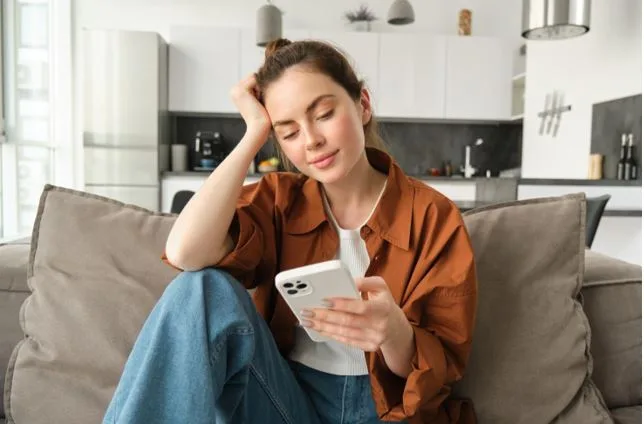Mental Health Apps Are Booming — But Do They Really Work?
It feels like there’s an app for everything now — from tracking steps to ordering dinner. Mental health hasn’t been left behind. Over the past few years, thousands of apps have appeared promising better sleep, calmer thoughts, and help for anxiety or depression. Downloads keep growing, and investors continue to pour millions into this expanding field. Yet many people quietly wonder: do these digital helpers actually do what they say?
A quick scroll through app stores shows names like Headspace, Calm, and MindShift ranking high in health categories. Each one offers a slightly different path — guided meditation, CBT exercises, or daily mood logs. Some users swear by them. Others delete them after a week. The truth, as researchers keep saying, lies somewhere in the middle. Studies show these tools can support mental well-being when used properly, but they’re not magic pills. Many users treat them as a convenient first step, a pocket-sized bridge to professional care. Many digital spaces, including www.thebangercasino.com, note that people seek not just excitement but emotional release — a theme closely tied to mental well-being.
What the Numbers Say
Recent reviews give a clearer picture. Meta-analyses from 2024 reported that mental health apps produce small to moderate improvements in depression and anxiety. One large-scale review found an average effect size around 0.28 for depression symptoms and 0.26 for anxiety. It’s not life-changing, but it’s measurable. Those numbers mean that for many users, mood and stress levels can improve when they stick with the program.
The biggest factor is engagement. People who open the app regularly — logging moods, completing exercises, or listening to sessions — tend to see better results. Those who stop after a few days rarely feel any benefit. Like gym memberships, mental health apps work best when used consistently.
Why People Turn to Apps
Access to mental health services remains uneven. In many countries, getting therapy means long waiting lists or high costs. Digital solutions fill that gap. They’re available 24/7, cost little or nothing, and let users practice coping skills at home. For mild symptoms or stress management, that’s often enough to make a difference.
Here’s what draws users in most:
- Most apps have free versions or low-cost subscriptions.
- Many prefer self-guided tools to talking about issues face to face.
- Anyone with a phone can use them, wherever they are.
- Regular reminders and streak counters keep users accountable.
Still, accessibility doesn’t equal clinical support. Experts warn that apps are not replacements for therapy — they’re supplements.
The Science Behind the Screen
The best-performing apps share something in common: they rely on cognitive-behavioral therapy (CBT) principles. This method focuses on identifying negative thought patterns and reshaping them through small, repeated exercises. CBT’s effectiveness is well-documented, and when integrated into apps, it brings structure and science into the experience.
A few examples of evidence-based designs include:
- CBT-i Coach, created with the U.S. Department of Veterans Affairs, helps people with insomnia build healthier sleep routines.
- MindShift, developed by Anxiety Canada, uses CBT tools for managing worry and panic.
- Headspace and Calm, while not medical apps, have several peer-reviewed studies showing modest benefits for stress reduction.
Apps built on vague “mindfulness” concepts without structured methods tend to perform worse in trials. It’s not that mindfulness doesn’t help — it’s that design and follow-up matter.
Common Pitfalls
Despite their promise, mental health apps come with limitations. A big one is dropout rate. Up to 70% of users stop using them within a month. Some lose motivation; others get overwhelmed by too many notifications. Design researchers call this the “app fatigue” effect.
Another problem: regulation. Out of thousands of available apps, only a handful have gone through formal clinical evaluation. Many developers make bold claims without publishing data. Privacy is another issue. Investigations in 2024 revealed that several apps shared sensitive user data with advertisers. Reading privacy policies before installing one has never been more important.
To stay safe and actually benefit, users can follow a few simple habits:
- Check if the app was developed or endorsed by a health organization.
- Look for transparent data policies and evidence links.
- Avoid those promising instant results or “curing” mental illness.
- Treat it as a tool, not a therapist.
Realistic Expectations
Using a mental health app won’t solve deep-rooted trauma, but it can ease daily stress, improve awareness, and track mood changes. Think of it as an extra support system. Some therapists even recommend patients use specific apps between sessions to reinforce coping techniques.
When used wisely, these digital tools offer something powerful: structure. They remind users to breathe, reflect, or slow down — moments that often vanish in busy lives. And while they may not replace human connection, they can guide people toward it.
In short, mental health apps do work — just not for everyone, and not on their own. Their value lies in helping people start, stay mindful, and take that first, often hardest, step toward feeling better.






